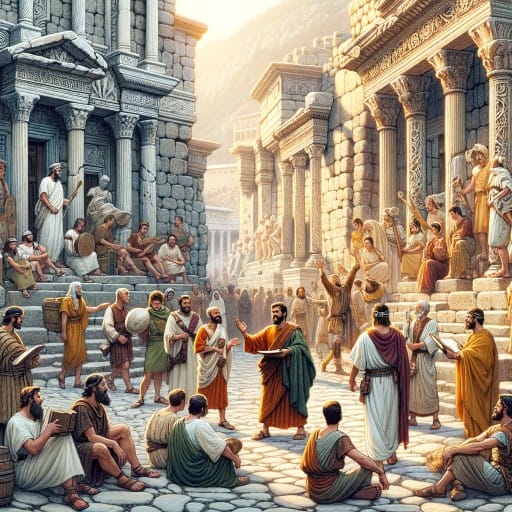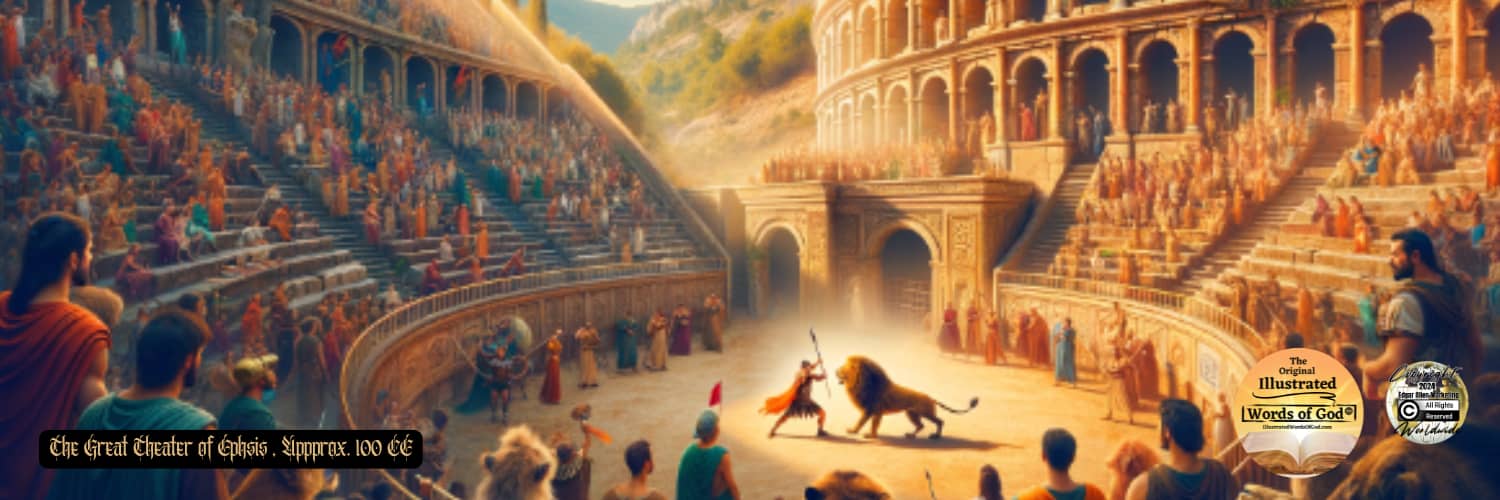The Most Important Melting Pot In The Roman Empire
In the 1st century, the ancient city of Ephesus was a melting pot of diverse cultures, religious beliefs, and practices. Located in modern-day Turkey, Ephesus was a bustling metropolis known for its grand architecture, strategic location, and vibrant commercial activity. But what truly set Ephesus apart was its unique juxtaposition of paganism and Christianity, making it a crucible where these two contrasting belief systems collided and eventually intertwined.
Paganism Thrived In Ephesus – Long Before Christianity
Paganism thrived in Ephesus, with the city being home to one of the Seven Wonders of the Ancient World: the Temple of Artemis, dedicated to the Greek goddess Artemis, the goddess of the hunt. The Ephesians were deeply connected to their pagan roots, engaging in elaborate rituals, sacrifices, and festivals to honor their gods and goddesses. The city was also a hub for mystical practices, attracting practitioners of magic, astrology, and other esoteric arts.
The New Kids On The Block Were Making Waves
However, amidst this sea of paganism, a new religious movement was taking root – Christianity. The Apostle Paul visited Ephesus in the mid-1st century, preaching the gospel and establishing a Christian community in the city. The teachings of Jesus Christ spread rapidly, challenging the traditional beliefs of the Ephesians and gaining a devoted following among the local population.
The “New Kids” Clashed With The Pagan Worshipers

The clash between paganism and Christianity in Ephesus was palpable, as believers in both religions vied for influence and dominance. The Christians faced persecution and opposition from the pagan authorities, who viewed the new faith as a threat to their power and influence. Yet, despite the challenges they faced, the Christian community in Ephesus remained steadfast in their beliefs, eventually establishing a strong presence in the city.
St Paul’s Letter in The New Testament Urged Believers Forward
The Apostle Paul’s Letter to the Ephesians, found in the New Testament, provides a glimpse into the struggles and triumphs of the early Christian community in Ephesus. In his letter, Paul encourages the Ephesians to stand firm in their faith, to be united in love, and to resist the temptations of the pagan world around them. He also emphasizes the importance of spiritual warfare, urging believers to put on the armor of God to protect themselves from the forces of darkness.
Artimis’ Followers Rioted Mightily Against St. Paul’s Teachings
One of the most famous incidents involving the clash between paganism and Christianity in Ephesus is recorded in the Acts of the Apostles. When Paul’s preaching threatened the livelihood of the silversmiths who made a living selling statues of the goddess Artemis, they incited a riot in the city’s theater, chanting “Great is Artemis of the Ephesians” for hours on end. The city officials eventually quelled the uproar, but it underscored the deep-seated animosity between the followers of the two religions.
The Power of The Gospel Caused Christianity to Grow
Despite the opposition they faced, the Christians in Ephesus continued to thrive and grow, eventually establishing a strong Christian presence in the city. The Ephesians’ willingness to adopt a new faith during a deeply entrenched pagan culture is a testament to the transformative power of Christianity to change lives and communities.
Both Paganism And Christianity Left A Legacy
Today, the ancient city of Ephesus stands as a testament to the enduring legacy of both paganism and Christianity. The ruins of the Temple of Artemis and other pagan structures serve as a poignant reminder of the city’s rich history and cultural heritage. At the same time, the Christian artifacts and inscriptions bear witness to the enduring impact of the early Christian community in Ephesus.
Ephesus’ Two Traditions, Only One of Which Thrived
Ephesus was a hotbed of paganism and a crucible of Christianity in the 1st century, where believers in both religions clashed and coexisted in a complex tapestry of faith and beliefs. The story of Ephesus serves as a powerful reminder of the transformative power of religion and the resilience of those who stand firm in their faith, even in the face of adversity.

Notes A.I. Images: The images used here were generated by the "A.I. Image MachineTM."
1. The featured image at the top of the blog is a creative imagining of The Great Theater of Ephesus.
2. St. Paul proclaiming the Gospel of Jesus Christ in the square at Ephesus. Copyright 2025 Illustrated Words of God, all rights reserved worldwide.
